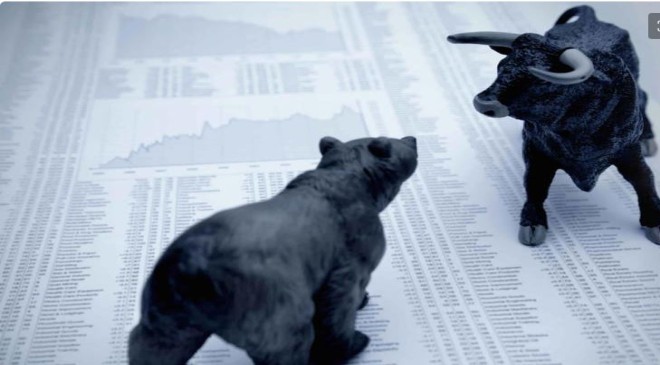Though it may not be what you want to hear, stock market corrections and bear markets are a normal part of the investing cycle. Over the past 73 years, there have been 39 double-digit corrections in the benchmark S&P 500. The latest occurred in 2022, which saw the growth-focused Nasdaq Composite (NASDAQINDEX: ^IXIC) get hit the hardest. The previously high-flying Nasdaq shed 33% of its value, marking its worst return since 2008.
Also Read– I Declare Shenanigans on the New Bull Market
While these dips can weigh on investors’ emotions in the short run, they’re ultimately blessings in disguise for the patient. Over long stretches, every correction and bear market, including in the Nasdaq Composite, has eventually been wiped away by a bull market rally.
Despite a significant rally in the Nasdaq this year, the widely followed index still sits close to 20% below its all-time high set in November 2021. That means there’s still plenty of opportunity for long-term investors to pounce on high-quality growth stocks trading at a discount.
What follows are four unique growth stocks you’ll regret not buying in the wake of the Nasdaq bear market dip.
Also Read– Here’s the pain trade Citi sees in U.S. stocks as S&P 500 exceeds its 2023 target
Etsy
The first distinctive growth stock that’s begging to be bought with the Nasdaq still well below its record-closing high is e-commerce up-and-comer Etsy (NASDAQ: ETSY). Although Etsy could endure a couple of challenging quarters if the U.S. were to dip into a recession, the company has a number of competitive advantages at its disposal that should allow it to outperform over a longer period.
Pretty much all online retail marketplaces are compared to Amazon, which is nothing short of a juggernaut. But while Amazon trumps all retailers in terms of online sales, it lacks the one factor that makes Etsy special: personalization. Etsy’s marketplace is predominantly made up of small merchants that are capable of personalizing and customizing orders to a scale that few, if any, other e-commerce platforms can match.
Read More:-Oil prices could soar higher as Russia, others shrug off criticism from Biden administration
Though sales momentum has definitely slowed down in recent quarters as higher interest rates and recessionary fears build, Etsy’s key performance indicators have come a long way from pre-pandemic levels. In particular, reactivated buyers have more than doubled over the trailing-four-year period (through the end of March 2023), and habitual buyers are up significantly. Habitual buyers spend $200 or more annually and make purchases on at least six days over a one-year period. In other words, Etsy isn’t having any trouble encouraging existing users to spend more, or bringing prior buyers back to its platform.
Another reason for Etsy’s ongoing success is the willingness of management to reinvest in the business. Etsy has focused on improving search queries for consumers, as well as bolstered the data analytic tools available to merchants. These investments have kept customers and merchants relatively happy, which is what has given Etsy strong fee-pricing power.
Despite trading for a seemingly pricey 28 times forward-year earnings, Etsy is a lot cheaper than you probably realize when factoring in Wall Street’s consensus annualized earnings growth of 16% over the next five years.
Read More:-The S&P 500 finally broke through a key level. Now what?
Walt Disney
A second unique growth stock that you’ll be kicking yourself for not buying in the wake of the Nasdaq bear market decline is media stock Walt Disney (NYSE: DIS). For those of you wondering how Disney made a growth stock list, consider that Wall Street is looking for the “House of Mouse” to deliver nearly 22% annualized earnings growth over the next five years.
While most companies were adversely impacted by the COVID-19 pandemic in one way or another, Walt Disney really took it on the chin. Many of its theme parks were closed, and movie theater attendance was drastically reduced, which hurt film revenue. Thankfully, the worst of the pandemic looks to be over, which is allowing these moneymaking segments to bloom, once more.
Read More:-Stocks slide as debt ceiling vote looms, jobs data stays hot: Stock market news today
Similar to Etsy, Walt Disney brings an irrefutable competitive edge to the table: its irreplaceability. Sure, there are plenty of theme parks to go to, or movies/shows to watch. However, none have characters that evoke emotions in viewers quite like Disney. No other company can match the Walt Disney experience, which is a big reason why it possesses exceptional pricing power at its theme parks and resorts.
There’s also the growth potential of Disney’s streaming services. It took less than three years for Disney+ to surpass 160 million subscribers. By comparison, it took industry leader Netflix over a decade to reach the same number of paying streaming subscribers. Even with price increases across the board for Disney+, the Disney+ subscriber count has declined by just 6 million over the past two quarters (six months). That’s a testament to the lure of the Disney brand and the company’s pricing power.
At only 17 times forward-year earnings, Walt Disney looks like a good bet to bounce back.

The third special growth stock you’ll regret not buying following a sizable drop in the Nasdaq Composite is social media company Pinterest (NYSE: PINS). Though ad revenue has been notably weak over the past couple of quarters due to recessionary concerns, Pinterest finds itself well-positioned to profit throughout the decade — and perhaps well beyond.
One of the bigger knocks against Pinterest in the latter-half of 2021 and early 2022 had been its declining monthly active user (MAU) count. Pinterest is one of a handful of social media sites that enjoyed a surge in MAUs during the initial stages of the pandemic, then saw this growth reverse as COVID-19 vaccines became available and life returned to some semblance of normal. But if you pan out five or more years, you’d see this temporarily blip in MAU volatility caused by the pandemic hasn’t disrupted the long-term uptrend in user growth.
Also Read- The S&P 500 finally broke through a key level. Now what?
As I’ve said before, what’s far, far more important than simply drawing in new users is monetizing its existing MAUs. Despite last year being incredibly challenging for ad-driven businesses, Pinterest managed to grow its global average revenue per user (ARPU) by 10%. Yes, ARPU fell 1% in the March-ended quarter of this year, which shows even Pinterest isn’t immune to the recent ad struggles. However, it also demonstrates that Pinterest has reasonably strong ad-pricing power and merchants will pay up to reach its 463 million MAUs.
Best of all, there’s little chance that data-tracking software changes being implemented by app developers will hurt Pinterest’s operating model. Since most social media sites rely on data-tracking tools to help advertisers target consumers, users being able opt out of data-tracking is a problem. With Pinterest, the entire premise of the platform is for users to willingly share what goods, services, and places interest them. It’s data Pinterest can easily serve up to advertisers.
Expect Pinterest’s growth to reaccelerate in a big way by mid-decade, if not much sooner.
Read More:-Stocks slide as debt ceiling vote looms, jobs data stays hot: Stock market news today
PayPal Holdings
The fourth unique growth stock you’ll regret not buying in the wake of the Nasdaq bear market dip is none other that fintech leader PayPal Holdings (NASDAQ: PYPL). Even with historically high inflation and growing payments competition as headwinds, PayPal continues to deliver.
The issue with inflation for PayPal is that it can reduce the discretionary spending power of low-earning consumers. PayPal is a predominantly fee-driven platform, which means more transactions are optimal for higher gross profits. Yet in spite of this headwind, the company saw transactions grow by 13% to 5.8 billion in the March-ended quarter, with total payment volume surging 12% on a constant-currency basis.
Perhaps even more impressive is what we’re seeing in terms of user engagement. When 2020 came to a close, active users on PayPal were completing an average of 40.9 transactions over the trailing-12-month (TTM) period. As of the end of March 2023, active accounts were averaging 53.1 transactions over the TTM. Though the company attributed this jump primarily to “Braintree transaction growth,” it’s a very positive sign for gross profits.
Also, don’t forget that digital payments are still in their very early stages of growth. A newly issued report from Boston Consulting Group calls for global financial technology sales to jump sixfold — from $245 billion to $1.5 trillion — by 2030. PayPal is leading the charge here and fully capable of sustained double-digit growth.
The icing on the cake for shareholders is that management does recognize that sales growth has slowed in the short term. As a result, PayPal is repurchasing up to $15 billion of its common stock and expects to have reduced its operating expenses by at least $1.3 billion this year. At just 11 times forward-year earnings, PayPal stock has never been cheaper.

























